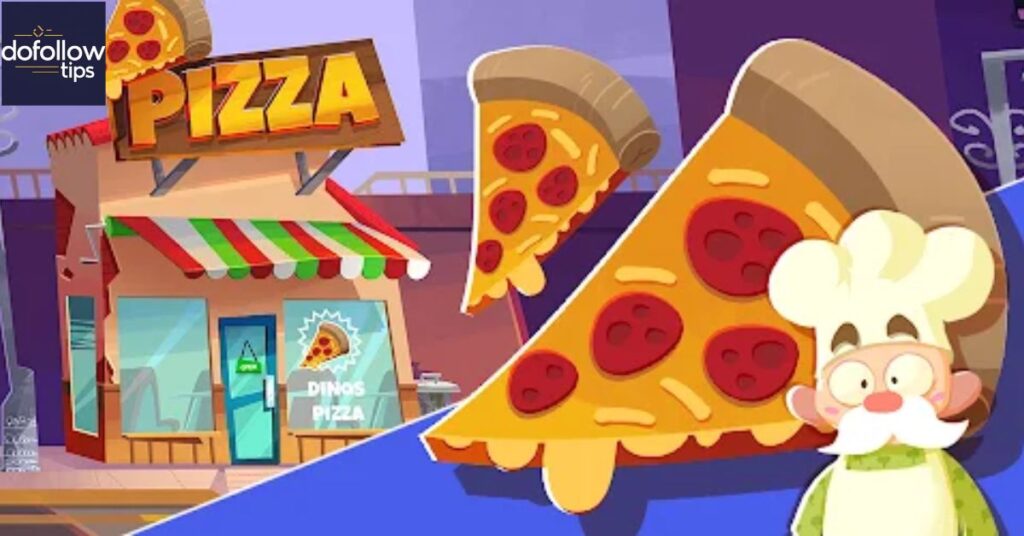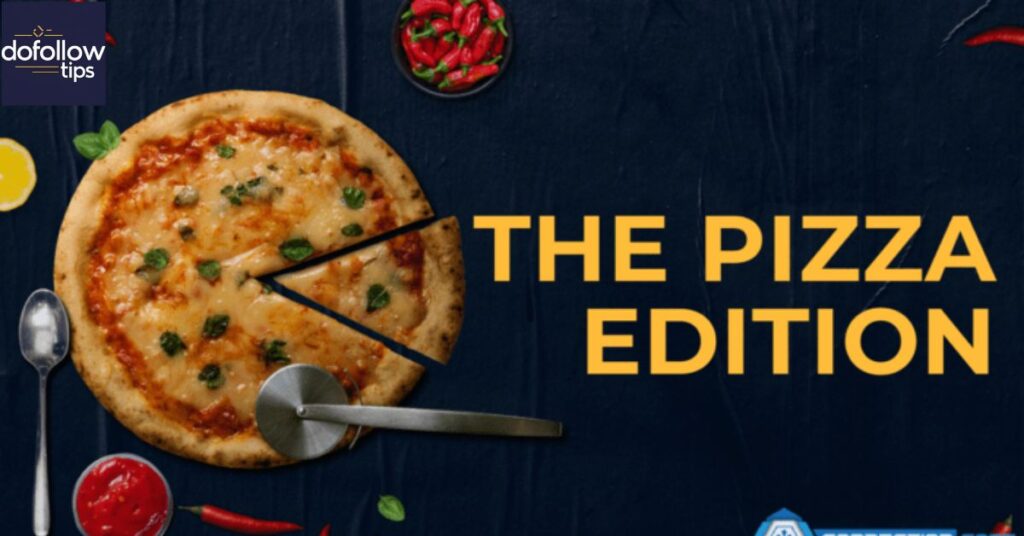The Pizza Edition GitHub project is a tasty twist on version control. It serves up collaboration with a side of pepperoni. Developers can now slice their code like a piping hot pizza.
This guide walks you through the cheesy goodness of pizza-themed coding. You’ll learn to top your repositories with savory features. It’s a fun way to spice up your GitHub workflow.
What is the Pizza Edition GitHub Framework?

The Pizza Edition GitHub Framework is an innovative approach to software development. It combines the familiar concepts of pizza-making with the technical aspects of version control. This framework reimagines how developers interact with GitHub. It aims to make the development process more intuitive and enjoyable.
The framework uses pizza-related terminology to describe various aspects of development. This unique approach helps developers visualize complex processes more easily. It’s designed to enhance collaboration and streamline workflows. The Pizza Edition GitHub Framework is suitable for both small teams and large enterprises.
READ THIS BLOG : Explore Harmonicodecom: The Future of Innovation
Slicing Up the Development Process
In this framework, each project is likened to a pizza. The base represents the core codebase. Toppings symbolize different features or modules. This metaphor helps teams break down large projects into manageable pieces. It makes it easier to assign tasks and track progress.
Developers can “slice” the project into smaller, more manageable parts. Each slice represents a specific feature or component. This approach encourages modular development. It also makes it easier to isolate and fix issues.
Customizing Your Development “Pizza”
The Pizza Edition GitHub Framework offers great flexibility. Teams can customize their development process like crafting a perfect pizza. They can choose from various “toppings” or development tools. This customization ensures that the framework fits any project’s unique requirements.
Teams can select their preferred methodologies, coding standards, and review processes. This flexibility allows for a tailored approach to development. It ensures that the framework can adapt to different team sizes and project complexities.
Serving Up Collaboration
Collaboration is at the heart of the Pizza Edition GitHub Framework. It encourages frequent “tastings” or code reviews. Team members can provide feedback and suggest improvements. This process is similar to adjusting a pizza recipe based on customer feedback.
The framework promotes a culture of continuous improvement. It encourages open communication among team members. Regular check-ins and updates are encouraged, much like status updates in a busy pizzeria kitchen.
Benefits of Implementing the Pizza Edition GitHub

Streamlined Collaboration
The Pizza Edition GitHub Framework significantly enhances team collaboration. It provides a common language and metaphor that all team members can understand. This shared understanding leads to better communication. It reduces misunderstandings and improves overall productivity.
The framework encourages frequent interactions between team members. It promotes a culture of sharing and learning. This collaborative environment leads to faster problem-solving and more innovative solutions.
Enhanced Code Quality
By implementing the Pizza Edition GitHub Framework, teams can improve their code quality. The framework encourages regular code reviews, likened to “tasting sessions”. These reviews help identify and fix issues early in the development process.
The framework also promotes best practices in coding. It encourages developers to write clean, well-documented code. This focus on quality leads to more robust and maintainable software products.
Flexible Customization
One of the key benefits of the Pizza Edition GitHub Framework is its flexibility. Teams can adapt the framework to suit their specific needs. They can choose which “toppings” or features to implement. This customization ensures that the framework works well for various project types and team sizes.
The framework can be easily integrated with existing tools and processes. This flexibility makes it easier for teams to adopt the framework without disrupting their current workflows.
How to Get Started with the Pizza Edition GitHub?
Fork the Repository
To begin using the Pizza Edition GitHub Framework, start by forking the main repository. Visit the official Pizza Edition GitHub page. Click the “Fork” button in the upper right corner. This action creates a copy of the repository in your GitHub account.
Forking allows you to experiment with the framework without affecting the original codebase. It’s the first step in customizing the framework for your team’s needs.
Clone Your Fork
After forking the repository, the next step is to clone it to your local machine. Use the git clone command followed by your fork’s URL. This process downloads the files to your computer. It allows you to work on the project offline and make changes using your preferred development environment.
Cloning creates a local copy of the repository. This local copy is where you’ll make your initial changes and customizations.
Set Up Your Development Environment
Before you start coding, it’s crucial to set up your development environment correctly. Install all necessary dependencies listed in the project’s documentation. This typically involves running package manager commands like npm install or pip install -r requirements.txt.
Proper setup ensures that you have all the tools and libraries needed to work with the framework. It prevents potential issues down the line.
Explore the Documentation
Take time to thoroughly read the documentation provided with the Pizza Edition GitHub Framework. Pay special attention to the project structure and coding conventions. Familiarize yourself with any specific guidelines for contributing to the project.
Understanding the documentation is crucial for using the framework effectively. It helps you align your work with the project’s standards and best practices.
Best Practices for Using the Pizza Edition GitHub
Optimize Your Workflow
To get the most out of the Pizza Edition GitHub Framework, optimize your workflow. Familiarize yourself with the framework’s unique features. Learn how to use its specialized branch management system and pizza-themed commit messages effectively.
Utilize the built-in tools to streamline your development process. This optimization can significantly enhance collaboration among team members. It leads to more efficient and productive development cycles.
Leverage Custom Integrations
The Pizza Edition GitHub Framework offers several custom integrations designed to enhance your GitHub experience. Take advantage of tools like the “Topping Tracker” for managing feature requests. Use the “Slice Slicer” for breaking down large tasks into manageable chunks.
These pizza-themed tools add a fun element to your work. They also improve project organization and team productivity. Explore and utilize these integrations to maximize the benefits of the framework.
Maintain Consistent Documentation
Clear and consistent documentation is key to successfully implementing the Pizza Edition GitHub Framework. Use the provided templates to create comprehensive README files. Develop clear contributing guidelines and a code of conduct for your project.
Regularly update your documentation as your project evolves. Ensure that all team members and potential contributors have access to the latest information. Good documentation facilitates smoother onboarding and reduces misunderstandings.
ALSO READ THIS BLOG : Aeon Scope Insights: Your Path to Data Mastery
Embrace Continuous Learning
Stay up-to-date with the latest features and best practices of the Pizza Edition GitHub Framework. Regularly check the official documentation and participate in community forums. Attend webinars and workshops to deepen your understanding of advanced techniques.
Share your experiences with fellow developers. By embracing a culture of continuous learning, you’ll maximize the benefits of this unique GitHub framework. It also helps in adapting the framework to your team’s evolving needs.
Frequently Asked Questions
What is Pizza Edition GitHub?
Pizza Edition GitHub is a playful adaptation of the standard GitHub interface. It’s designed to make version control and collaborative coding more engaging and fun. The framework incorporates pizza-themed elements into the familiar GitHub workflow.
How does it differ from regular GitHub?
While retaining all core functionalities of GitHub, Pizza Edition adds pizza-themed visual elements and terminology. For example, repositories might be called “pizzerias,” commits could be “toppings,” and pull requests might be referred to as “delivery orders.”
Can I use Pizza Edition for serious projects?
Absolutely! Pizza Edition GitHub is fully compatible with standard GitHub repositories and workflows. The pizza theme is simply a fun overlay that doesn’t impact your ability to manage code, collaborate with team members, or integrate with other development tools.
Is Pizza Edition GitHub suitable for large teams?
Yes, Pizza Edition GitHub is designed to scale from small projects to large enterprise-level development. Its flexible nature allows it to adapt to teams of any size, promoting better collaboration and communication regardless of team scale.
How can I contribute to the Pizza Edition GitHub project?
You can contribute to the Pizza Edition GitHub project by forking the repository, making improvements, and submitting pull requests. You can also contribute by reporting bugs, suggesting new features, or helping to improve the documentation.
Conclusion
The Pizza Edition GitHub Framework offers a fresh and engaging approach to software development. By combining the familiar concepts of pizza-making with the technical aspects of version control, it makes the development process more intuitive and enjoyable. This framework promotes better collaboration, enhances code quality, and offers flexible customization options.
Implementing the Pizza Edition GitHub Framework requires thoughtful planning and consistent execution. Teams should leverage its unique features and custom integrations to optimize their workflow. Maintaining clear documentation and embracing continuous learning are key to success with this framework.

Anthony is a seasoned SEO expert with a passion for content writing, keyword research, and web development. He combines technical expertise with creative strategies to deliver exceptional digital solutions.












